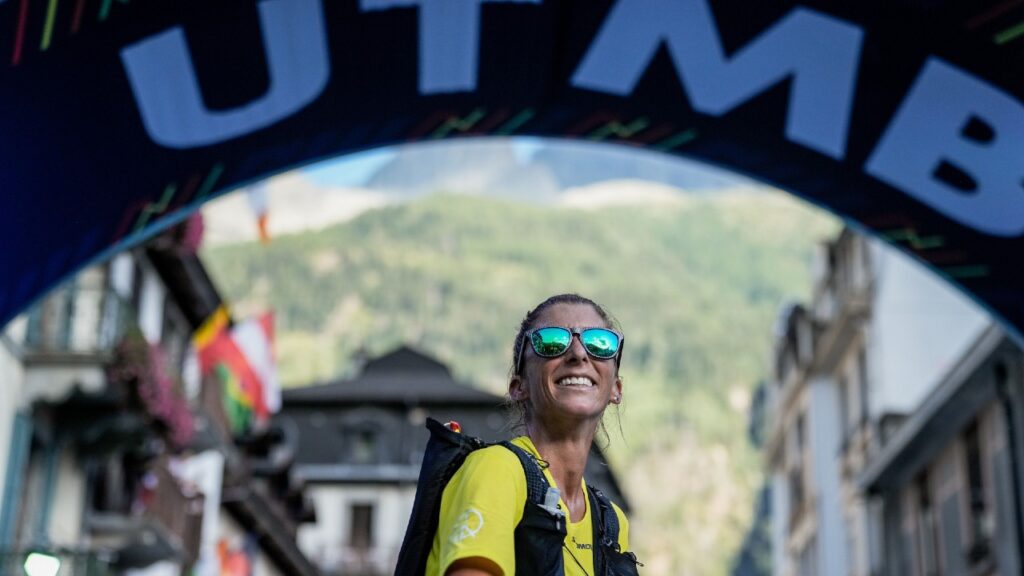Courtney Dauwalter, who holds a distinguished record in the ultrarunning circuit, has confirmed her participation in this year’s UTMB (Ultra-Trail du Mont-Blanc), a seminal event in the trail running calendar. As a three-time winner and former course record holder, Dauwalter’s history with the race bears significant weight. Her victories in 2019, 2021, and 2023 underscore a level of consistency and endurance that many aspire to achieve. In her recent announcement via social media, she expressed excitement for the challenge ahead, indicating a strategic focus on preparing for the event set for August 29.
The Tour du Mont Blanc, the route that UTMB follows, is renowned for its grueling nature, spanning approximately 106 miles with an elevation gain of over 10,000 meters. For experienced ultrarunners, racing on this course requires not only physical stamina but also meticulous planning regarding pacing, nutrition, and gear selection. Dauwalter’s performances have exemplified optimal pacing strategies, which can serve as a reference point. Particularly, her record-breaking run of 22:30:54 in 2021, where she finished significantly ahead of her competitors, illustrates how critical energy management is across the event’s varied terrain.
In a competitive landscape, her upcoming participation heightens interest in the dynamics between her and Katie Schide, the American runner who surpassed Dauwalter’s previous record with a new benchmark of 22:09:31 in the last UTMB. Schide has yet to confirm her entry for this race, and should she choose to compete, it could catalyze a notable rivalry. Both athletes possess distinct strengths; Dauwalter’s ability to thrive under crowd support, as evidenced in her recent victory, proves how external factors can also amplify performance during a race.
Given the unpredictable nature of mountain ultras, course changes or environmental factors can also play a pivotal role in a runner’s preparation. The UTMB circuit, comprising diverse terrains across three countries, introduces elements such as weather shifts and trail conditions, which can challenge even the most seasoned ultrarunners. Understanding how to adapt to these elements is crucial for race-day success. Runners should familiarize themselves with the course specifics, including elevation profiles, water source locations, and potential shelter areas, providing a tactical advantage when strategizing their routes.
An emerging aspect to consider is the effect of evolving gear technology. Recent advancements in footwear and nutrition could dramatically influence performance in ultras. For instance, lightweight trail shoes designed for maximal grip can enhance stability on variable terrains, while innovative hydration systems may reduce pack weight and improve accessibility during the race. Evaluating the latest gear advancements could inform decisions on what works best for individual preferences and running styles.
Athletes also share insights that go beyond the race itself, often discussing strategies that reflect lessons learned from previous competitions. Pacing, for instance, is crucial; it’s common for experienced runners to enter ultra races with a conservative initial pace that allows for endurance accumulation over the race duration. Dauwalter’s approach of leveraging crowd energy as a motivational tool highlights the importance of mental strategies in addition to physical readiness. This duality of preparation can be a lens through which to evaluate how best to approach training cycles leading up to such a demanding race.
In light of the intense competition at the UTMB, understanding the mental game—how to harness both pressure and exhilaration—can be beneficial for runners looking to increase their chances of a top performance. Races like the UTMB present opportunities to learn from real-time pacing decisions and the reactions to adversities encountered on course. Observing the strategies of elite athletes can provide valuable lessons in how to mentally navigate challenges that arise in high-stakes running environments.
As you prepare for such an event, take note of practical takeaways: refine your understanding of effective pacing strategies, incorporate the latest advancements in gear, and develop a mental toolkit that allows you to harness the environment to your advantage. These factors collectively can foster not just performance enhancements but also a deeper appreciation for the intricacies of ultrarunning.
Ultimately, the takeaway for runners preparing for mountain ultras is to treat every preparatory session and race experience as a learning opportunity. Emphasize adaptability, both physically and mentally, as conditions vary widely with altitude and terrain shifts. This fluid approach will serve you well as you navigate the multifaceted nature of ultrarunning challenges.
